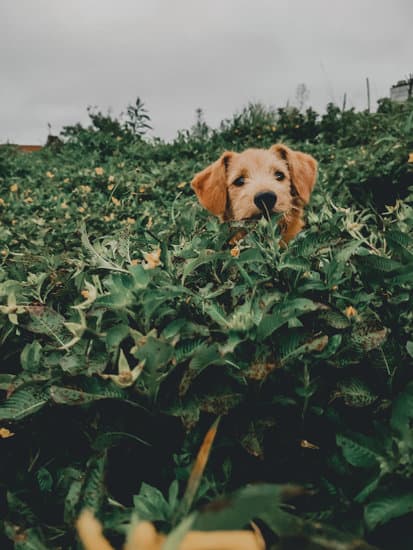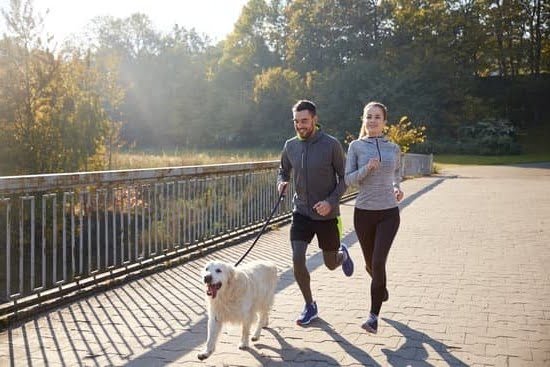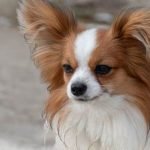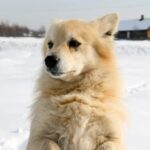Pig hunting dogs play a crucial role in the world of hunting, utilizing their keen sense of smell and agility to track down and corner wild pigs. If you’re wondering how to train pig hunting dogs, you’ve come to the right place. In this article, we will delve into the history and purpose of these specialized canines, highlighting the essential steps to take when training them for successful hunts.
The relationship between humans and hunting dogs dates back centuries, with pig hunting specifically having a long tradition in many cultures. Pig hunting dogs are bred for their ability to work alongside hunters, detecting and controlling wild pigs while navigating through challenging terrains. Understanding this history provides insight into the significance of proper training techniques that tap into these inherent skills and instincts.
When it comes to training pig hunting dogs, selecting the right breed is paramount. Characteristics such as intelligence, agility, strength, and stamina are crucial factors to consider. Building a strong foundation based on trust and communication with your dog sets the stage for successful training outcomes. By following proven methods in obedience training, exposure to hunting environments, scent training techniques, and advanced skills development, you can prepare your pig hunting dog for a safe and effective hunt.
Choosing the Right Breed for Pig Hunting
When it comes to training pig hunting dogs, choosing the right breed is essential. Different breeds have unique characteristics that make them more suitable for this type of hunting. Here are some key features to look for when selecting a breed for pig hunting:
- Physical Strength: Pigs can be formidable animals, so it’s important to choose a breed with the physical strength and stamina to keep up with them during a hunt. Breeds like American Pit Bull Terriers, Catahoulas, and American Bulldogs are known for their strength and tenacity.
- Tracking Instinct: A good pig hunting dog should have a strong tracking instinct to be able to locate pigs in dense forested areas. Breeds like Black Mouth Curs and Blue Lacys are known for their excellent tracking abilities.
- Fearlessness: Hunting pigs can be dangerous work, so it’s crucial to choose a breed that is fearless and courageous. Dogs like Dogo Argentinos and Rhodesian Ridgebacks are known for their bravery in the face of challenging prey.
Once you have chosen the right breed for pig hunting, it’s important to start their training early to ensure they develop the necessary skills and behaviors. Now let’s take a look at how to train pig hunting dogs effectively:
- Introduce your dog gradually to the sounds and scents associated with hunting pigs.
- Start basic obedience training early on, focusing on commands like sit, stay, come, and heel.
- Use positive reinforcement techniques such as treats or praise when they exhibit desired behaviors during training sessions.
By carefully selecting the right breed and following these training tips, you can set your pig hunting dog up for success in the field and establish a strong bond between you as a hunter and your loyal canine companion.
Training Foundation
Building a strong relationship with your pig hunting dog is essential for successful training. The bond between a hunter and their dog is crucial in developing trust, communication, and teamwork. Before diving into the specifics of how to train pig hunting dogs, take the time to build a solid foundation based on mutual respect and understanding.
To establish a strong relationship with your dog, it’s important to spend quality time together outside of training sessions. Engage in activities that allow you to bond with your dog on a personal level, such as playing fetch or going for a hike. By creating positive experiences outside of hunting, you can strengthen the connection between you and your canine companion.
Additionally, consistency and clear communication are key components of building a strong relationship with your pig hunting dog. Dogs thrive on routine and structure, so make sure to set clear expectations and boundaries from the start.
Use positive reinforcement techniques, such as treats or praise, to reward good behavior and create a positive learning environment for your dog. By establishing trust and respect early on, you will lay the foundation for successful training sessions on how to train pig hunting dogs.
Basic Obedience Training
Another important aspect of basic obedience training is teaching your pig hunting dog to sit, stay, and heel. These commands can be invaluable when navigating rough terrain or encountering other animals during a hunt. Use rewards and repetition to reinforce these behaviors consistently. Remember that patience and consistency are key when training any dog, especially one destined for the demanding work of pig hunting.
Establishing control through basic obedience training not only enhances safety during hunts but also fosters trust between you and your hunting dog. By setting clear boundaries and expectations from the start, you can build a strong foundation for more advanced training in the future. The bond formed through obedience training will be crucial as you progress to more specialized skills required for pig hunting, such as tracking and holding down game.
| Aspect | Importance |
|---|---|
| Recall Command | Essential for communication during hunts |
| Sit, Stay, Heel Commands | Enhances control and safety in various situations |
| Patient Consistency | Key to successful obedience training and bonding with your dog |
Exposing Your Dog to the Hunting Environment
Now that you have chosen the right breed for pig hunting and built a strong foundation with your dog, it’s time to expose them to the hunting environment. Familiarizing your dog with woods and scent is essential in preparing them for a successful hunt. Here are some key steps on how to train pig hunting dogs by exposing them to the hunting environment:
1. Introduce Your Dog to Woods: Take your dog on regular walks in wooded areas to get them accustomed to the sights, sounds, and terrain of the hunting environment. Allow them to explore and investigate different smells and scents that they will encounter during a hunt. Gradually increase the distance and difficulty of the terrain to build their confidence and stamina.
2. Practice Scent Tracking: Utilize training aids such as scented articles or hides to introduce your dog to tracking specific scents like those of pigs. Start with simple trails in familiar locations and gradually progress to more challenging scenarios in unfamiliar areas. Encourage your dog’s natural instinct to track by rewarding them when they successfully follow a scent trail.
3. Simulate Hunting Scenarios: Create mock hunting scenarios by hiding food or toys in wooded areas for your dog to find. This not only reinforces their tracking abilities but also mimics the excitement and thrill of a real hunt. Practice commands such as “search” or “find” while encouraging your dog to use their senses effectively.
By exposing your dog to the hunting environment early on, you are setting them up for success in pig hunting adventures. Remember that patience, consistency, and positive reinforcement are key components when training your pig hunting dog in woods and scent environments.
Scent Training
Once your dog is comfortable with the pig scent, you can begin implementing basic tracking exercises. Start by placing a small piece of cloth with the scent trail in an open area for your dog to follow. Reward your dog every time they successfully track and find the cloth, reinforcing their ability to use their nose effectively. Gradually increase the difficulty by placing the scent trail over longer distances or more challenging terrain to enhance your dog’s tracking skills.
As your dog progresses in their scent training, consider using real-life scenarios to simulate hunting situations. Take your dog out into wooded areas or places where wild pigs are known to frequent, allowing them to practice tracking pigs in a natural environment. By consistently exposing your dog to these real-life hunting environments, you will help them build confidence and hone their tracking abilities.
Remember, patience and consistency are key when training pig hunting dogs in scent work. With dedication and proper guidance, you can develop a skilled and reliable hunting partner who excels at tracking pigs during hunts.
Advanced Techniques
The advanced techniques of teaching your pig hunting dog to corner and hold pigs are crucial skills that can take your hunting game to the next level. When training your dog for this specific task, consistency and patience are key. It is important to remember that not all dogs will naturally excel in this area, so it may take time and dedication to master these advanced techniques.
One effective way to train your dog to corner and hold pigs is through controlled practice sessions. Start by using a well-trained pig or a simulation of one, such as a scent trail or a decoy. Teach your dog how to approach the pig calmly and quietly, guiding them to the desired position for cornering. Use verbal cues or hand signals to indicate when they should start circling the pig and applying gentle pressure without making physical contact.
Another essential aspect of training your dog for cornering and holding pigs is building their confidence in challenging situations. Gradually increase the difficulty level of your training sessions by introducing distractions, changing environments, or working with larger pigs. Encourage positive behavior with rewards such as treats or praise when your dog successfully corners and holds the pig. Remember, each dog learns at its own pace, so be patient and supportive throughout the training process.
| Training Technique | Description |
|---|---|
| Controlled Practice Sessions | Use a simulated pig or scent trail to teach cornering and holding. |
| Building Confidence | Gradually increase difficulty levels and reward positive behavior. |
Safety Tips for Hunting With Your Dog
Proper Gear and Equipment
Before heading out for a hunting trip with your pig hunting dog, it is crucial to ensure that you have all the necessary gear and equipment. This includes a GPS tracking collar for your dog, protective vests for both you and your furry companion, sturdy boots, a first aid kit, water for hydration, and any other essential items for a safe excursion. By being prepared with the right gear, you can minimize risks and focus on enjoying the hunt.
Establishing Boundaries
One important aspect of ensuring safety during pig hunting with your dog is establishing clear boundaries. Make sure to set limits on where your dog can roam during the hunt to prevent them from straying too far or getting lost.
Utilizing commands such as “stay” or “come back” can help in controlling your dog’s movements and keeping them within a safe distance. Additionally, it is crucial to be aware of potential hazards in the hunting environment and steer clear of any areas that could pose risks to you or your canine companion.
Communication and Teamwork
Effective communication between you and your pig hunting dog is key to a safe and successful hunt. Practice clear verbal commands with your dog during training sessions to ensure they understand what is expected of them in various hunting scenarios.
Establishing a strong bond based on trust and teamwork will make it easier to navigate challenging situations while out in the field. Remember that safety should always be a top priority when hunting with your beloved canine partner, so prioritize open communication and cooperation throughout the entire experience.
Troubleshooting Common Training Issues
Patience and Consistency
Training pig hunting dogs can be a rewarding but challenging process. One of the key aspects of overcoming common training issues is to maintain patience and consistency throughout the training sessions. Dogs, like humans, learn at their own pace and may require repeated reinforcement of commands.
It’s important not to get discouraged if your dog does not immediately grasp a certain concept or behavior. By staying patient and consistent in your training efforts, you can effectively address any challenges that may arise.
Addressing Behavioral Problems
During the training process, you may encounter behavioral problems such as excessive barking, over-excitement, or lack of focus. To address these issues, it’s essential to understand the root cause of the behavior and work on redirecting it towards more appropriate actions.
For example, if your dog becomes overly excited when tracking a scent, you can implement techniques to help them remain focused on the task at hand. By addressing behavioral problems promptly and effectively, you can prevent them from escalating into more significant training issues.
Seeking Professional Help
If you find yourself struggling with addressing common training issues or facing setbacks in your pig hunting dog’s development, don’t hesitate to seek professional help. Experienced trainers or behaviorists can provide valuable insights, recommendations, and guidance to help you overcome challenges effectively. They can assess your dog’s progress, identify areas for improvement, and offer personalized training strategies tailored to your dog’s needs.
Additionally, joining a community of fellow pig hunting dog enthusiasts can provide support and resources to navigate through any training obstacles you may encounter. Remember that seeking help is a sign of dedication towards improving your dog’s skills and strengthening the bond between you both during the hunting experience.
Conclusion
In conclusion, training pig hunting dogs requires patience, dedication, and a deep understanding of the bond between hunter and dog. By following the steps outlined in this article, individuals can learn how to train pig hunting dogs effectively and safely. From choosing the right breed to exposing them to the hunting environment, each step plays a crucial role in developing a successful hunting team.
One of the key takeaways from this article is the importance of building a strong relationship with your dog. This foundation is essential for effective training and communication during hunts. By investing time and effort into establishing trust and respect with your dog, you can enhance their skills as a pig hunting companion.
Overall, training pig hunting dogs goes beyond teaching commands and tracking abilities; it is about fostering a deep connection based on mutual trust and cooperation. Through patience, consistency, and a genuine love for the sport of pig hunting, hunters can celebrate the unique bond they share with their canine companions in the great outdoors. So remember, when embarking on this journey of training pig hunting dogs, cherish every moment spent together in the pursuit of adventure and camaraderie.
Frequently Asked Questions
How Do You Train a Dog to Hunt Hogs?
Training a dog to hunt hogs requires patience, consistency, and proper technique. Start by teaching basic commands like sit, stay, and come. Introduce the dog to the scent of pigs gradually and reward them for displaying hunting instincts.
What Is the Best Dog for Pig Hunting?
The best dog for pig hunting is often considered to be the Catahoula Leopard Dog. Known for their intelligence, strength, and loyalty, they have been bred specifically for hunting wild boars. Other breeds like American Pit Bull Terriers or Black Mouth Curs can also excel in hog hunting.
Can You Train a Hunting Dog Yourself?
Yes, you can train a hunting dog yourself with dedication and knowledge of training techniques. It’s important to understand the specific needs of the breed you are working with and tailor your methods accordingly. Consistent positive reinforcement is key in producing a well-trained hunting companion.

Welcome to the blog! I am a professional dog trainer and have been working with dogs for many years. In this blog, I will be discussing various topics related to dog training, including tips, tricks, and advice. I hope you find this information helpful and informative. Thanks for reading!





